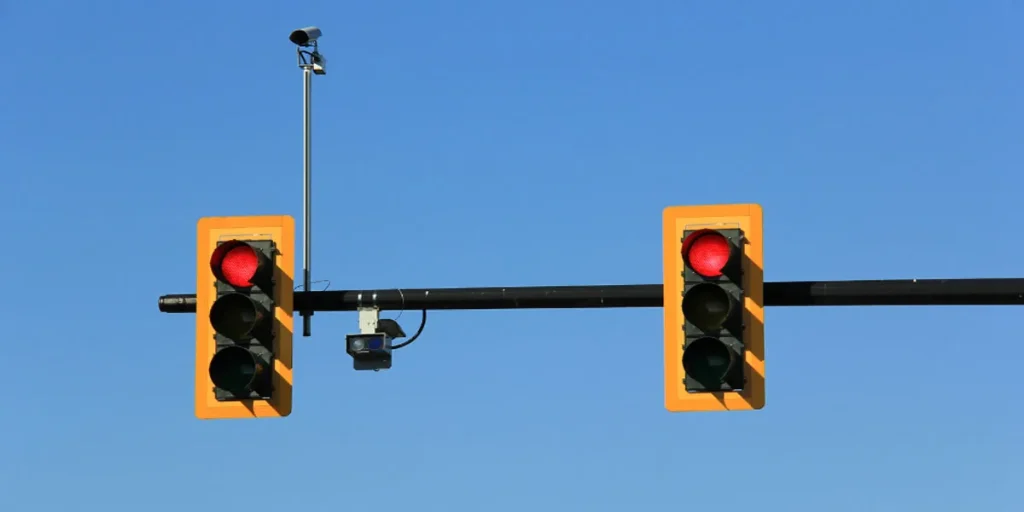Stop lights typically weigh between 30 and 50 pounds. The exact weight can vary depending on design and materials used.
Understanding the specific features and sizes of stop lights is crucial for transportation authorities, traffic engineers, and maintenance crews.
These devices play an integral role in traffic control, ensuring the safety of pedestrians and drivers alike.
They are rigorously engineered to withstand various weather conditions, which contributes to their weight.
Proper installation and secure mounting are essential, considering the potential consequences of a stop light falling due to inadequate support.
The weight also reflects the robust nature of these units, which incorporate sturdy casings, electronic components, and sometimes backup power systems to maintain functionality during outages.
Hence, the importance of the weight of traffic lights extends beyond the mere physical aspect; it is also a testament to their durability and reliability in the face of constant use and exposure to natural elements.

Introduction To Traffic Light Infrastructure
Stop lights, or traffic lights, play a vital role in urban mobility. They manage vehicular and pedestrian traffic, ensuring safety and efficiency on the roads.
Understanding their weight and composition is essential for those involved with their installation, maintenance, and urban planning.
Delve into the fascinating world of these ubiquitous devices that orchestrate the flow of traffic in our bustling cities.
Composition Of Stop Lights
Have you ever wondered what materials make up a stop light? They are more than just metal and glass. Modern stop lights are an intricate blend of various elements:
- Housing Units: Typically, weather-resistant aluminum or polycarbonate plastics.
- Lens Covers: Made of durable, clear materials like glass or acrylics to protect internal components.
- LEDs: Energy-efficient light-emitting diodes are the main light sources in newer models.
- Wiring and Electronics: Intricate systems allowing for the light sequences and remote control functionality.
A single unit can weigh from 30 to 50 pounds (13 to 23 kilograms), depending on its design and the materials used.
Differences Between Traffic Light Systems
Not all traffic light systems are the same. The weight and design can vary greatly:
| Type of System | Typical Materials | Average Weight |
|---|---|---|
| Traditional Incandescent: | Metal, glass | 50 pounds |
| Modern LED: | Aluminum, polycarbonate | 30 pounds |
The evolution of technology has led to differences in the construction and efficiency of traffic lights. Modern systems not only weigh less but also consume less energy and are more reliable.
Behind The Red, Yellow, And Green

Ever wondered about the mechanics behind the familiar red, yellow, and green of stop lights? These lights guide millions of commuters daily.
Yet, the weight and design of traffic lights often go unnoticed. Let’s peer through the lens at what goes ‘Behind the Red, Yellow, and Green’.
Materials And Build Of Traffic Lights
Red, yellow, and green – the colors of safety on our streets. Traffic lights are more complex than they appear. Comprising various materials, their build is robust.
- Metal casing: Shields internal components from weather.
- Polycarbonate lenses: Ensures lasting visibility.
- LED bulbs: Provide bright, energy-efficient light.
These lights range in weight from 30 to 50 pounds (14 to 23 kg). This weight is essential to withstand winds while hanging aloft.
Evolution Of Stop Light Designs
Traffic lights have evolved significantly. Early designs featured incandescent bulbs and simple structures. The following developments mark this evolution:
- From incandescent to LED: Brighter lights, less energy.
- Lightweight materials: Easier installation, lesser strain on supports.
- Solar-powered options: Sustainable, cost-effective operation.
This progression not only changed the physical weight but also improved functionality and reliability for road users worldwide.
Weighing The Lights
Imagine driving to work, and as you approach an intersection, a massive structure captures your gaze.
It’s not a skyscraper but a familiar sight in urban landscapes: the humble stop light.
But have you ever wondered exactly how hefty these traffic controllers are? Let’s lift the veil on the weight of these essential traffic devices.
Range Of Weights In Stop Lights
Stop lights come in various sizes, each with its own weight class. Typically, these weights vary based on numerous factors, such as material and size.
Small stop lights might weigh as little as 30 pounds, while larger models can tip the scales at over 400 pounds.
This broad range ensures that stop lights can withstand different environmental conditions while remaining firmly in place.
Factors Influencing The Weight
The weight of a stop light can depend on several key elements:
- Housing Material: Most stop lights have metal housings, with aluminum being a popular choice due to its lightness and durability.
- Size of the Light: Bigger lights require more material, adding to the overall weight.
- Type of Bulb: Traditional incandescent bulbs have given way to LED lights, which can affect the weight of the light fixture.
- Internal Components: Additional features like backup power supplies and smart sensors could increase the weight.
Evaluating these factors reveals the complexity behind the weight of stop lights and the ingenuity involved in their design and implementation.
Installation And Maintenance Challenges

The installation and upkeep of stop lights raise unique challenges. Professionals must handle significant weights.
Each phase, from erecting the poles to ongoing maintenance, requires careful planning and robust equipment. This ensures safety and efficiency in keeping our roads regulated.
Handling The Heft During Installation
During installation, the significant weight of stop lights is a prime concern.
- Cranes or hoists come into play to lift stop lights.
- Teams secure the lights with stability in mind.
- Precise coordination prevents accidents and ensures public safety.
Careful handling is vital. Properly installed lights endure weather and the test of time.
Maintenance Impacts Of Weight
Stop light weight also impacts maintenance routines.
- Technicians use specialized equipment to manage weight.
- Regular inspections and servicing demand durable ladders or bucket trucks.
- Urgent repair or replacement can be complex and time-sensitive.
Weight considerations ensure safe and functional stop lights, avoiding disruption to traffic flow.
Technological Advancements
Stop lights play a vital role in traffic management and road safety. Through the years, advancements in technology have allowed for significant improvements.
Today, these devices are not just more efficient but also lighter and smarter.
Lightweight Alternates
Recent innovations have introduced lighter materials in stop light production. These alternatives include high-strength plastics and composite fibers.
Benefiting from these materials, traffic signals are less burdensome on their supporting structures.
- Durable polymers resist weather conditions.
- Composite fibers offer exceptional strength-to-weight ratios.
- Aluminum frames are both light and recyclable.
Manufacturers are now able to produce stop lights that weigh significantly less than their traditional counterparts, reducing installation costs and time.
Future Trends In Traffic Light Designs
- Energy-efficient LED lighting continues to replace older, heavier bulbs, decreasing the overall weight.
- Smart traffic lights will use sensors and artificial intelligence to dynamically manage traffic patterns.
- Advancements in solar technology may lead to self-powered units, reducing the need for external power sources.
Looking forward, innovation aims to enhance functionality while minimizing weight and maintenance needs.
Developers are focusing on ways to make stop lights not only lighter but also more robust against extreme weather and more adaptable to changing traffic conditions.
The future of traffic light design promises to improve both the safety and efficiency of our roadways.
Understanding The Impact
Understanding the impact of a stop light’s weight extends beyond its physical heaviness.
It influences safety measures, costs, and environmental factors.
Exploring these aspects gives us a deeper insight into why the weight of traffic lights matters.
Safety Considerations Of Stop Light Weight
Traffic light weight is critical for public safety. Heavier lights require sturdier support structures.
- Stronger poles reduce risk during extreme weather.
- Heavy lights can become dangerous projectiles if dislodged.
Lighter stop lights also mean less injury risk in an unlikely fall.
Economic And Environmental Impacts
Manufacturing, transporting, and installing heavy stop lights costs more.
| Weight Factor | Economic Impact | Environmental Impact |
|---|---|---|
| Materials | Higher raw material costs | Larger carbon footprint in production |
| Transport | Fuel costs increase with weight | Higher emissions from transport vehicles |
| Installation | More complex equipment needed | More energy consumed in setup process |
Lessen the burden on economies and ecosystems with lighter traffic signals.
FAQs About the Weight of Stop Lights
What Is The Weight Range Of Traffic Lights?
Traffic lights can vary significantly in weight, with smaller ones weighing around 30 pounds.
Larger, pole-mounted traffic signals can be over 150 pounds. The exact weight depends on their size and materials.
Are Pedestrian Signals Lighter Than Road Stop Lights?
Yes, pedestrian signals tend to be lighter than road stop lights. They usually weigh less since they’re smaller and designed to serve sidewalks, not intersections. Typically, a pedestrian signal weighs around 15-25 pounds.
How Does The Material Affect Stop Light Weight?
The weight of a stop light is greatly influenced by its material composition. Traditional stop lights made from metal and glass are heavier.
Newer models with LED lights and polycarbonate materials are lighter, contributing to more efficient installation and maintenance.
What Factors Increase A Traffic Light’s Weight?
Enhanced features like multiple signal heads, larger lenses, and additional supporting hardware can increase a traffic light’s weight.
Stop lights equipped for severe weather or with larger reflective backplates also weigh more.
Conclusion
Understanding the weight of stop lights adds to our appreciation of city infrastructure. These traffic controllers often weigh between 30 and 50 pounds.
Proper installation and maintenance are crucial for their stability. Next time you see one, you’ll know the engineering marvel above you! Stay informed and drive safe.
Resources:
https://www.cisa.gov/news-events/news/traffic-light-protocol-tlp-definitions-and-usage
https://ddot.dc.gov/service/traffic-signals
